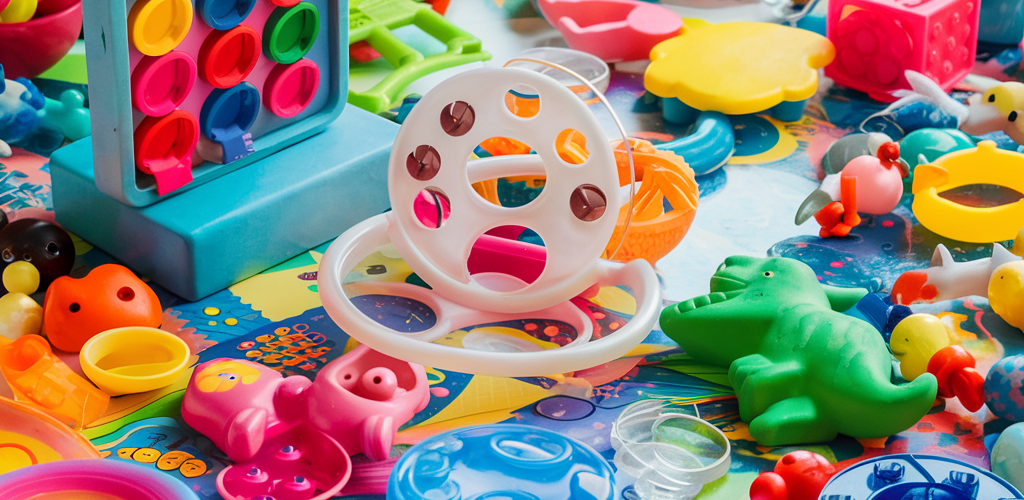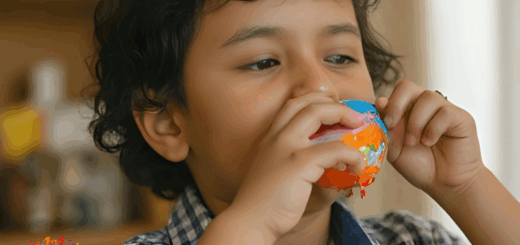Best Sensory Toys for Non-Verbal Autistic Toddlers: Expert Picks for Calm & Development

When it comes to supporting non-verbal autistic toddlers, the right sensory toys can make a world of difference. These carefully selected toys not only provide entertainment. They also serve as valuable tools for communication development. They aid in emotional regulation and sensory integration.
Why Sensory Toys Matter for Non-Verbal Autistic Toddlers
Sensory play isn’t just fun—it’s essential for development in children with autism. For non-verbal toddlers, these toys become even more crucial as they:
- Support non-verbal communication: Many autistic children express themselves through touch, movement, and sensory exploration rather than words
- Enhance emotional regulation: The right sensory input can help prevent meltdowns and provide calming effects during overwhelming moments
- Encourage exploration and learning: Sensory toys create safe opportunities for discovery and skill-building
- Build social connections: Shared sensory experiences can facilitate interaction with peers and family members
- Develop fine and gross motor skills: Many sensory activities strengthen coordination and physical abilities
Structured sensory play can significantly improve attention span. It can also reduce anxiety and create positive associations with learning in autistic children. These benefits make sensory toys an invaluable addition to any home therapy toolkit. For more insights on creating supportive environments, check out our guide on autism-friendly home spaces at 101autism.com.
10 Best Sensory Toys (2024 Guide)
Based on occupational therapist recommendations and parent reviews, here are the top sensory toys for non-verbal autistic toddlers:
1. Weighted Stuffed Animals
These cuddly companions provide deep pressure stimulation that many autistic children find calming.
• Available in various weights (1-5 lbs) • Machine washable for easy cleaning • Helps with sleep and anxiety management • Doubles as comfort object during transitions
Check current prices on Amazon
2. Sensory Fidget Cube
A compact, multi-textured toy perfect for on-the-go sensory needs.
• Six different tactile surfaces • Silent operation for classroom use • Pocket-sized and durable • Promotes focus and stress relief
3. Textured Play Balls Set
Soft, squeezable balls with various textures for tactile exploration.
• Non-toxic silicone material • Different sizes for hand strengthening • Bright colors aid visual processing • Easy to clean and sanitize
4. Musical Sensory Tubes
Rain sticks and sound tubes offer auditory and visual stimulation.
• Generate calming rainfall sounds • Transparent design for visual tracking • Help develop cause-and-effect understanding • Available in different lengths and tones
5. Kinetic Sand Play Set
Moldable, mess-free sand that encourages creativity and fine motor development.
• Never dries out or hardens • Gluten-free and non-toxic • Includes molds and tools • Provides proprioceptive input
Find kinetic sand sets on Amazon
6. Bubble Sensory Light
A calming visual toy that combines lights and moving elements.
• Color-changing LED lights • Bubbling water feature • Timer function for bedtime routine • Quiet operation won’t overstimulate
7. Therapy Putty Set
Color-coded putty with varying resistance levels for hand strengthening.
• Six different resistance levels • Includes exercise guide • Enhances finger dexterity • Great for occupational therapy at home
8. Sensory Chew Necklace
Safe oral motor tool for children who seek proprioceptive input through mouthing.
• Food-grade silicone construction • Adjustable cord length • Multiple texture options • Reduces inappropriate chewing behaviors
9. Pop It Sensory Fidget Toy
The trendy bubble-popping toy that provides satisfying tactile and auditory feedback.
• Reusable and washable • Multiple shapes and sizes available • Helps with stress reduction • Encourages bilateral coordination
10. Sensory Tunnel
A cozy retreat that provides proprioceptive input and a safe space.
• Collapsible for easy storage • Machine washable fabric • Interior pockets for extra toys • Perfect for deep pressure seeking
Safety Tips for Choosing Sensory Toys
When selecting sensory toys for non-verbal autistic toddlers, safety should always be your top priority:
Material Safety
- Choose non-toxic, BPA-free materials
- Look for toys with ASTM safety certification
- Avoid items with small parts that pose choking hazards
- Select machine-washable options for hygiene
Size Considerations
- Ensure toys are age-appropriate in size
- Avoid items smaller than a child’s closed fist
- Check for secure attachments and seams
- Consider the child’s strength when selecting weighted items
Durability Factors
- Invest in high-quality toys that withstand frequent use
- Look for warranties or satisfaction guarantees
- Read reviews about long-term durability
- Replace worn or damaged toys immediately
For additional safety guidelines and product recommendations, visit our comprehensive sensory toy safety guide at 101autism.com.
FAQs
Can sensory toys replace therapy?
While sensory toys are valuable tools, they complement but don’t replace professional therapy. These toys work best as part of a comprehensive approach that includes occupational therapy, speech therapy, and other interventions. Always consult with your child’s healthcare team about incorporating sensory toys into their routine. Learn more about integrated therapy approaches on 101autism.com.
How often should I rotate toys?
Experts recommend rotating sensory toys every 1-2 weeks to maintain novelty and engagement. Keep 5-7 toys accessible at a time, storing others in a toy library. This prevents overstimulation while ensuring your child doesn’t become bored. Some children benefit from having a few consistent favorites available alongside rotating options.
What if my child doesn’t seem interested in sensory toys?
Every child with autism has unique sensory preferences. If certain toys don’t appeal to your toddler, try:
- Observing what textures and movements they naturally seek
- Introducing toys gradually in short play sessions
- Modeling play behavior without forcing participation
- Consulting with an occupational therapist for personalized recommendations
Are expensive sensory toys always better?
Quality matters more than price. Many effective sensory toys can be found at various price points. Focus on durability, safety certifications, and whether the toy matches your child’s specific sensory needs rather than cost alone.
How do I know which sensory toys are right for my child?
Start by observing your child’s sensory-seeking behaviors:
- Do they prefer soft or firm textures?
- Are they drawn to movement or stillness?
- Do they seek deep pressure or light touch?
- What sounds calm or energize them?
Use these observations to guide your selections, and don’t be afraid to try different options. For personalized advice on identifying your child’s sensory profile, check out our detailed guide at 101autism.com.
Creating a Sensory-Supportive Environment
Remember that sensory toys are most effective when used in a supportive environment. Consider creating a dedicated sensory space in your home where your toddler can explore these tools safely. This might include a quiet corner with soft lighting, calming colors, and easy access to their favorite sensory toys.
The journey of supporting a non-verbal autistic toddler requires patience, creativity, and the right tools. These sensory toys can serve as bridges to communication, sources of comfort, and catalysts for development. By choosing appropriate toys and creating supportive environments, you’re providing your child with valuable resources for growth and self-expression.
For more resources, tips, and expert advice on supporting autistic children, visit 101autism.com where our community of parents, educators, and professionals shares insights and strategies for everyday success.
This post contains affiliate links. As an Amazon Associate, we earn from qualifying purchases at no extra cost to you. All recommendations are based on expert reviews and parent feedback.
Keywords:



1 Response
[…] focused interests, enhance cognitive abilities, and provide sensory regulation opportunities. Research shows that interactive learning materials can significantly improve quality of life for neu… These tools create engaging and rewarding learning experiences tailored to individual […]